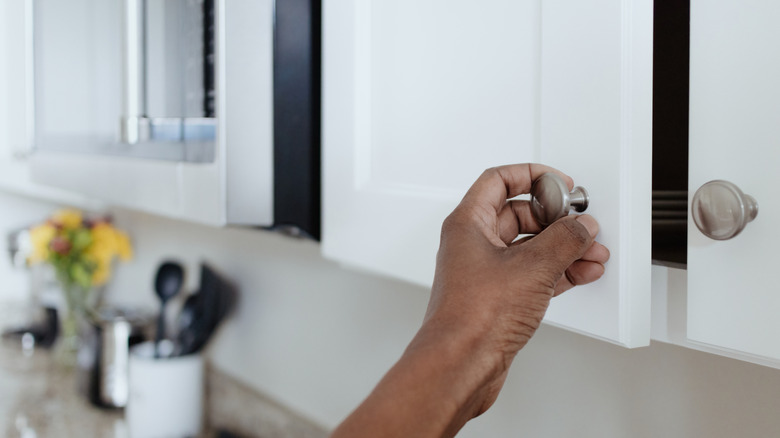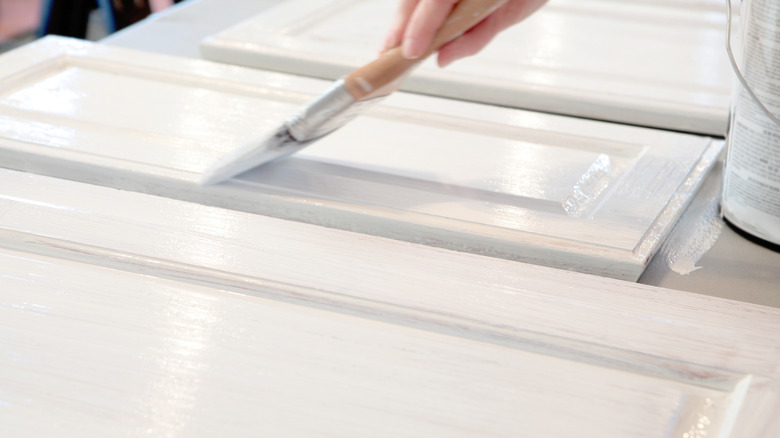How To Determine If You Have Latex Or Oil Based Paint
For both residential and commercial settings, latex and oil-based paints are the most commonly used types of paint. Latex paint, or water-based paint, is normally used for interior walls, trim, and ceilings because it is simple to use and doesn't degrade quickly. Oil-based paint, on the other hand, is typically used for doors, trim, cabinetry, and metal surfaces because of its longevity and durability. From a visual perspective, it is difficult to distinguish between the two paints when applied; however, a simple hack using denatured alcohol can easily determine what was used.
Although oil-based and latex paints can look very similar, especially when first applied, there are important distinctions. Oil-based paints tend to be smoother and glossier, whereas latex paints have a more satin or matte finish. Moreover, oil-based paint utilizes similar pigments but has a different binder. Lastly, it takes longer to cure and needs solvents like mineral spirits or paint thinner to thin it. Latex paint uses pigments contained in an acrylic polymer emulsion-based binder and is water-soluble, needing only water as its solvent. It also dries rather rapidly.
Before repainting a surface, it is essential to test the type of old paint to ensure good adhesion and avoid issues later on. Specifically, this means knowing whether the existing paint layer is water- or oil-based, as this determines its compatibility with your new paint products. Once type of paint is determined, the next step is to check if it can be painted straight away or if it needs to be smoothed out by sanding. If it is okay to repaint, both latex and oil-based old coats need to be cleaned first and lightly sanded before applying the appropriate primer and the main coat of paint.
Test your paint with alcohol
Doing this hack will determine the type of paint previously used. It only requires denatured alcohol and a rag or piece of cloth — use a white rag if the paint you're testing is dark and vice versa. To start the test, pour a small amount of the denatured alcohol onto the rag, and firmly rub it on the painted surface. If the paint rubs off, it means it is latex or water-based paint. If the rag is clean, it's likely oil-based paint. Aside from denatured alcohol, an alternative is acetone, which is present in nail polish remover. Use a similar process — add a few drops on a rag, and rub the rag on the painted surface to check the paint type. Both alcohol, and acetone work for this test because they can break the binders in paint.
Once the old paint type is realized, the correct type of paint can now be applied. The simplest guideline to follow is that oil-based paints are best used for metal surfaces. Latex paints, on the other hand, are more suitable for wood and drywall surfaces. For concrete surfaces, like walls and floors, which require durability, abrasion, and moisture resistance, epoxy paint is the ideal type to use. It is also worth noting that using a primer is a vital step in the painting process that creates a sealed and smoother painting surface.
To achieve the best results when painting, conducting surface preparation, which includes testing the old paint layer, is important. Premature fading, flaking, and mold formation can result from improperly painted surfaces, necessitating expensive repainting sooner than the normal timeframe. Additionally, knowing how to choose the right paint finish and using the proper techniques to paint like a professional are all important elements for painting-related projects.

